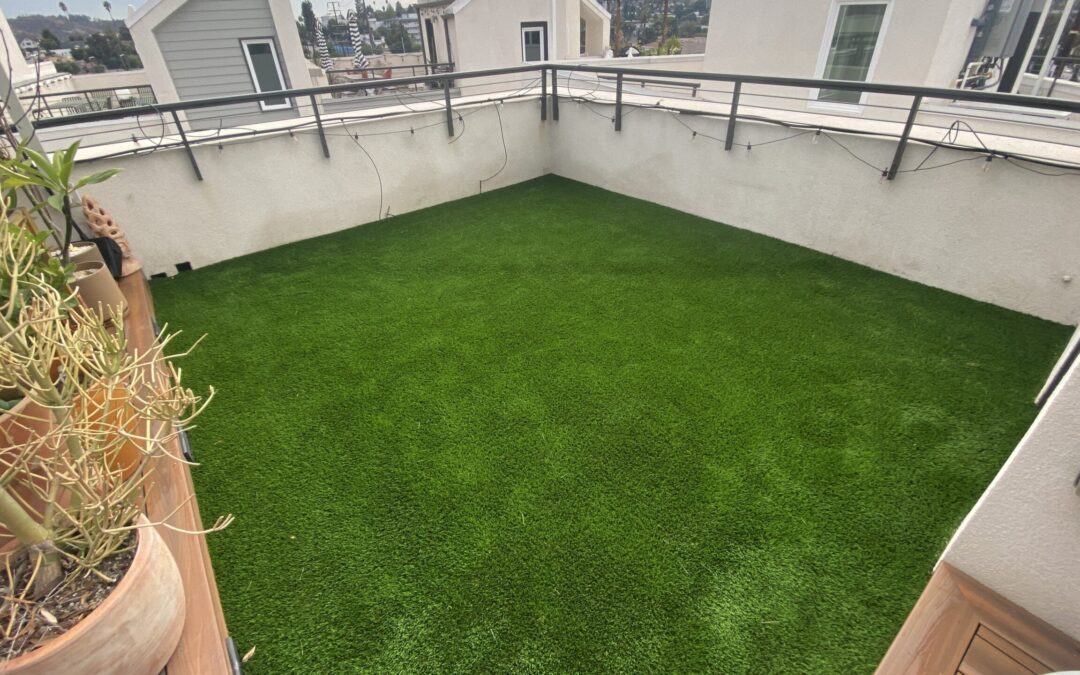The idea of green roofs and walls has become very popular in the field of urban architecture and landscaping. A novel approach to introduce nature into urban settings, green roofs and walls—also known as living roofs and vertical gardens—create aesthetically beautiful and environmentally sound habitats. Artificial grass has become a feasible and adaptable substitute for natural vegetation, which has historically been employed for similar installations, to provide spectacular vertical and raised landscapes. This blog will discuss the idea of green walls and roofs, the advantages they provide, and how fake grass might improve these cutting-edge constructions.
The Rise of Green Roofs and walls
Lack of green space in highly populated urban areas can be harmful to the environment and the welfare of the local populace. By incorporating vegetation into buildings and structures, green roofs and walls serve to address these issues, reducing the effects of urban heat islands, improving air quality, and providing a haven for both people and wildlife.
Buildings with green roofs can range in size from modest residential homes to substantial business complexes. They typically consist of layers of growing media, drainage, and waterproofing that are then covered with a variety of plants. Similar to this, green walls are vertical, vegetated constructions that are either affixed to the inside or outside of buildings. The advantages of these environmentally friendly solutions range from increased energy efficiency to improved aesthetics.
The Advantages of Green Walls and Roofs
Environmental Benefits: Green walls and roofs improve air quality by absorbing carbon dioxide and releasing oxygen. By bringing down surface temperatures and raising building energy efficiency, they also help to reduce the urban heat island effect.
- Urban biodiversity is enhanced by the microhabitats these projects produce, which are home to a variety of plant species, insects, and even small animals.
- Greenery gives a touch of aesthetic elegance to metropolitan settings, breaking up the monotony of concrete and steel.
- Noise reduction: Plant life works as a natural sound barrier, absorbing and softening outside noise.
- Energy Efficiency: Green walls and roofs act as natural insulators, minimizing the demand for heating and cooling systems and resulting in a reduction in energy usage.
- Health and Well-being: Exposure to green spaces has been associated with lowered stress levels, enhanced mental health, and an overall boost in well-being.
Artificial Grass in Green Roof and Walls
Green roofs and walls have traditionally been covered in natural vegetation, but due to issues with soil depth, upkeep, and the weight of the plant, other options are now being investigated. With its cutting-edge benefits and characteristics, artificial grass has emerged as a practical solution for these distinctive environments.
- Limited Maintenance: Regular care and maintenance are necessary for natural plants, which can be difficult in elevated installations. Artificial grass is a great option for difficult-to-reach regions because it doesn’t require watering, fertilizing, or trimming.
- Weight Factors: The structure of the building may be under stress due to the weight of the surrounding soil and vegetation. Artificial grass is lightweight and doesn’t need a lot of substrate, which lessens the strain on the structure.
- Design Flexibility: A variety of hues, textures, and styles are available in artificial grass, allowing designers to create eye-catching and individualized green installations.
- Consistent Appearance: The weather and growth patterns can cause natural vegetation to alter in appearance. Artificial grass keeps its lush appearance all year long.
- Installation Ease: Artificial grass is a suitable option for a variety of projects since it is easier to install than to grow and maintain natural vegetation.
Creating Vertical and Elevated Landscapes with Artificial Grass
Green roofs and walls can be artistically enhanced with artificial grass to improve their attractiveness and practicality.
- Roof Gardens: Artificial grass can be used to create rooftop gardens in urban areas with limited space, providing residents with a peaceful retreat while lowering the building’s energy usage.
- Recreational Spaces: Artificial turf in rooftop recreation spaces can offer a pleasant and secure setting for visitors to unwind, exercise, or socialize.
- Designers can experiment with patterns, shapes, and color combinations thanks to the plasticity of fake grass, creating aesthetically arresting rooftop landscapes.
Considerations for Using Artificial Grass in Vertical Landscapes
Although artificial grass has many advantages for green walls and roofs, there are a few things to bear in mind when planning and installing it:
- Drainage: To minimize water buildup and guarantee the durability of the artificial grass, adequate drainage systems are crucial.
- UV Resistance: Select fake grass that is resistant to UV rays to keep its color and beauty, especially in installations that are placed in direct sunlight.
- Maintenance: Although artificial grass requires much less maintenance than natural grass does, there are still times when cleaning and maintenance are required to preserve the fake grass’s longevity.
- Professional Installation: To ensure proper installation methods and materials, consulting with knowledgeable experts is essential.
Green walls and roofs are more than just decorative elements; they are creative responses to the problems caused by urbanization. Artificial grass is added as an exciting new dimension to these landscapes, providing a low-maintenance, aesthetically pleasing replacement for natural vegetation. Artificial grass combined with vertical gardening offers a sustainable, colorful, and alluring solution that is good for both people and the environment as urban surroundings continue to change. We are able to design urban areas that are both aesthetically pleasing and environmentally responsible by embracing this mix of technology and nature.

